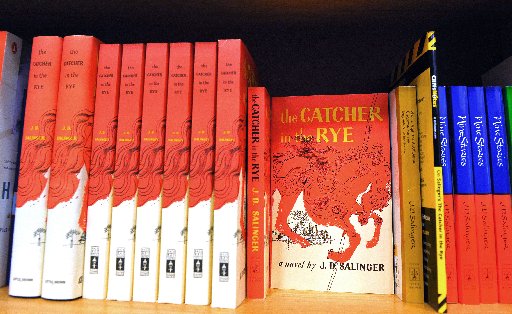
Is there a secret vault housing unpublished books, short stories and letters by reclusive author J.D. Salinger? Many think so.
Salinger, the legendary author of the 1951 Great American Novel ‘Catcher In the Rye’, died on Thursday at his enclosed home in Cornish, N.H. He was 91. Although he eagerly sought recognition in his college and early writing years, Salinger shied away from the fame that came with ‘Catcher’. The novel was immediately recognized as a classic and has sold over 65million copies hence and an additional quarter million in the U.S. market alone (sales should spike with his death). Like his immortal character Holden Caulfield, Salinger was bothered by what he saw as phonies all around him and felt unmade for the world. Like Holden, Salinger was also very ambiguous. After 1965, he never published again and eventually built 6-1/2foot fence around his estate to keep people away. He spent the rest of his life enclosed at home making news whenever he legally stopped someone from writing unauthorized biographies and sequels to ‘Catcher’ along with rejecting Hollywood offers to adopt ‘Catcher’. But he never stopped writing. As he told The New York Times in the ’70s: “There is a marvelous peace in not publishing. Publishing is a terrible invasion of my privacy. I like to write. I love to write. But I write just for myself and my own pleasure.”
There is a rumor that Salinger had written an unpublished sequel to ‘Catcher’ which will only be released upon his death and that this is just one of numerous books and other writings vaulted away. Will his death bring them finally to the public? And, if so, do we really want to read them?:
Is there literary gold in J.D. Salinger’s safe?
Maybe, maybe not.
The famously reclusive author of “The Catcher in the Rye,” who died Wednesday at 91, was said to stack unpublished manuscripts in the safe of his home in Cornish, N.H.
But Salinger’s camp won’t say if that’s true, according to the Associated Press, which checked with key folks connected to the author.
His literary representative, Phyllis Westberg of Harold Ober Associates, Inc., refused comment, according to the AP.
Marcia B. Paul, a lawyer who represented Salinger’s interests in a recent suit, wouldn’t take the AP’s call.
His publisher, Little Brown & Co., said a new Salinger book isn’t in the works.
His son, Michael, referred questions to Westberg.
But a neighbor of Salinger’s, who retreated to Cornish not long after the 1951 publication of “Catcher,” said in 1999 the author told him years before that he had locked at least 15 manuscripts in the safe.
Joyce Maynard, who lived with Salinger in 1972, wrote in a memoir that Salinger used to write daily and had finished at least two novels. The next question beyond whether the manuscripts exist is are they any good?
Famed author Jay McInerney didn’t like Salinger’s last published story, “Hapworth 16, 1924,” which appeared in The New Yorker in 1965.
And that makes him wary of what’s in the safe, he told the Associated Press.
“I think there’s probably a lot in there, but I’m not sure if it’s necessarily what we hope it is,” McInerney told the AP.
“‘Hapworth’ was not a traditional or terribly satisfying work of fiction . . . I have a feeling that his later work is in that vein,” he said.
The famed writing guru, Gordon Lish, who wrote an anonymous story in the 70s that some readers were convinced was by Salinger, said he was “certain” that the safe held good work.
Curtis Sittenfeld, whose novel “Prep” brought comparisons to Salinger, said she just wanted to know either way.
“I can’t wait to find out,” she told the Associated Press. “In our age of shameless self-promotion, it’s extraordinary, and kind of great, to think of someone really and truly writing for writing’s sake.”
Which is pretty much what Salinger told The New York Times in 1974 he was doing.
“There is a marvelous peace in not publishing,” he said told the Times. “Publishing is a terrible invasion of my privacy. I like to write. I love to write. But I write just for myself and my own pleasure.”
So whether the works survived is still a secret. One that may or may not be kept safe
I think his family should take the utmost precaution when deciding to release any of his writings. They should judge the value of it and base the decision on one criteria: how will it affect the Salinger legacy. If the effect will undermine his image of genuine intelligence – as some suspect – then they should keep them vaulted. If they give new meaning to the Salinger of ‘Catcher’ then it is time to share them with the world.
I, of course, hope for the latter.



